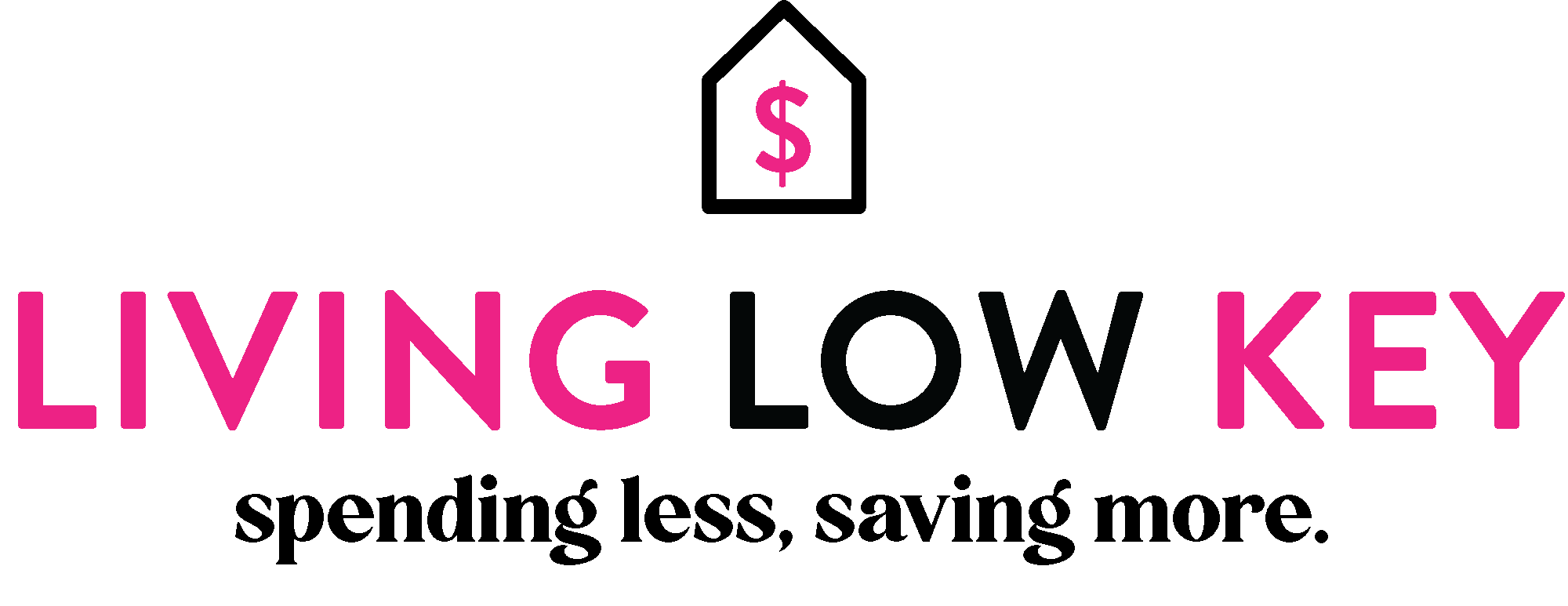Are you looking for a way to develop an effective budgeting system? If so, you may have heard of the 30-30-30-10 Budget Rule and wondered if this method is right for you.
This article has all the information you need to make an informed decision about whether or not this budgeting system is suitable for your individual financial needs. We’ll discuss what exactly the 30-30-30-10 Budget rule entails, its advantages, its disadvantages, and who it would be best suited to it.
Keep reading if you want to gain clarity on your potential new budgeting plan!

What Is The 30-30-30-10 Budget Rule?
The 30-30-30-10 Budget Rule is a budgeting system that asks you to divide your income into four categories. Yes, it really is that easy.
This includes:
- 30% for housing – rent, mortgage
- 30% for necessity expenses – bills, utilities, gas, groceries, health insurance
- 30% for savings and debt repayment
- 10% for wants – retirement, giving, fun, entertainment, travel
Regarding housing costs, the rule suggests spending no more than 30% of your take-home pay on rent or mortgage payments. This way, it’s easier to achieve financial freedom while avoiding financial burdens in the long run.
For necessity (lifestyle) expenses, this rule recommends allocating 30% of your income towards daily living costs such as bills, food, clothing, and other non-essential items. It’s important to remember that these expenses should be within your means and not push you further into debt.
By using the 30 30 30 10 Budget Rule’s third category – savings and debt repayment – you can set aside 30% of your income for saving for future goals or paying off any existing debts. This can help boost your long-term financial security by creating a cushion and providing a safety net in case of emergency expenditure.
Finally, 10% of your income should be devoted towards charitable giving, retirement investment, travel, and fun.

It is important to remember that this percentage may vary depending on individual circumstances; those with higher incomes may wish to adjust the percentages accordingly.
Overall, The 30-30-30-10 Budget Rule is designed to keep spending in check while allowing individuals to save money steadily over time with minimal effort through a straightforward budgeting system that prioritizes needs over wants.
Related budgeting articles:
- 65+ Sinking Fund Categories That Are Essential In Your Budget
- 19 Of The Best Cash Wallets For Budgeting Your Money
- 14 Of The Best Budget Planners You Will Obsess Over
- Budgeting For Beginners: How To Start A Budget That Works For You
Who Is The 30-30-30-10 Budget For?
The 30-30-30-10 Budget is a great budgeting system for those looking to get a handle on their finances and learn how to better manage their money. This system can help individuals save money, invest in the future, and pay off debts more easily.
This budget method works especially well for those who are just beginning to budget and need a simple system to follow. It also works for people who have difficulty staying on top of their spending. By following the 30-30-30-10 rule closely, it can be easier to track what you’re spending and ensure that you’re not overspending in any one area.
Who is the 30-30-30-10 Budget not for?
The 30-30-30-10 Budget Rule is not suitable for those who have difficulty making ends meet or living on a fixed income. This budgeting system requires you to commit to saving 30% of your income, which may be difficult when you struggle financially.
This budget also might not work well for those with irregular incomes, as it requires you to remain disciplined and consistent each month.
Lastly, this budget rule might not work if you live in a high-cost-of-living area, as 30% of your income may not cover the rent or mortgage payments. Living in cities such as New York, Washington D.C., and San Fransico are very high-cost living areas. In these cities, rent and mortgages can take up 50% or more of your monthly income.
How To Budget With The 30-30-30-10 Budget Rule

Budgeting with the 30-30-30-10 Budget Rule is an effective way to manage your finances and reach your financial goals.
Here is how to get started using this budget rule system:
Step 1. Add up your income
Adding up your income is the first step to budgeting with the 30-30-30-10 Budget Rule. Before you can begin following this budget rule, it’s important to know what money is coming in each month.
This includes any salary, wages, or other income you receive, such as rental income, investment returns, tips, or business profits.
To add this up, simply use a piece of paper, or grab our free budget binder. Write down all of your income mentioned above. I find it easiest to do this online and look at the past month’s bank statement.
Once your household income is calculated, you can move to step 2.
Step 2. Add up your expenses
Calculating your expenses is the next budgeting step with the 30-30-30-10 Budget Rule. To start, look at your monthly bills and fixed costs such as rent or mortgage payments, car payments, insurance premiums, loan payments, cell phone bills, utilities, and other regular costs.
So make sure you add up ALL expense categories and write them down. I would go grab our free budget binder and use the expense worksheet to list out all your expenses.
If you don’t know what your expenses are each month. Similar to the above, I recommend jumping online to your bank account. Line by line, write down all of your monthly expenses, including both fixed expenses and variable expenses. What did you spend money on last month?
This step is the most time-consuming. Most of us don’t really know how much we are spending each month until we sit down and write it out.
Once you have that figured out, you can move on to the other categories.
Step 3. Categorize your spending

Now that you have all of your essential expenses written out, it’s time to categorize your spending.
Some categories might not be super clear. For example, where would your house expenses go? Under your 30% for mortgage or rent, or under your lifestyle expense? This is where you get to choose. Suppose your mortgage or rent is under that 30% of your income. I would then add maintenance costs or any housing expenses to that 30% of your income.
However, if your home takes up 30% of your income, I would then consider home expenses a basic necessities expense.
If you are saving for an emergency fund, a down payment, student loan debt, or trying to pay off credit card debt, that would go under the 30% used for savings and paying off debt.
Lastly, any fun money, extra money, or spending money you save goes under the 10% of your income category.
Step 4. Set up your financial goals
Once you have determined your income, written out your expenses, and categorized your budget, it’s time to set some financial goals.
Setting financial goals will help you stay on track with the 30-30-30-10 budget method and ensure that you are making progress toward achieving your overall financial objectives. This should be done before you start budgeting. It’s important to work backward, so determine where you want to go first, then figure out how to get there.
Think about what you want to accomplish in the short term and long term. Do you have any financial goals for the year?
If not, here are some great savings goals:
- Save for a down payment
- Build an emergency fund
- Build a fun money bucket
- Become debt free
- Start a business or side hustle
- Travel the world
Write these down and break them into actionable steps. Use these goals to motivate you daily in your financial life.
Step 5. Adjust your spending to meet your goals

Now that you have set your financial goals, it’s time to adjust your budget to meet those goals. This might include making some cuts in some categories or increasing how much you put toward savings and debt payments.
If you need to make cuts:
- Look at your essential and lifestyle expenses to see if there is anything you can cut back on.
- Don’t be too hard on yourself.
- Just think of what you want the most and know that any change you make will help you reach your goals sooner.
Once you have made adjustments, it’s time to review and track your progress. Check-in with yourself every month to see how close you are to meeting your financial goals and make changes as needed.
By following the 30-30-30-10 budget rules, you can be sure that you are setting yourself up for financial success over the long term. It may take some tweaks here and there, but if you stay committed and focused, you will have an effective budget to help you meet your financial goals.
Benefits Of The 30/30/30/10 Budget Rule

The 30-30-30-10 Budget Rule is a helpful tool for those looking to manage their finances and reach their financial goals. It is a simple and straightforward budgeting system that creates an easy and efficient structure to follow.
Here are some of the key benefits it can provide:
1. Increased Savings: By committing to saving 30% of your income and paying off debt, it is easier to increase the amount you’re able to save.
2. Financial Security: This budgeting system provides a cushion against unexpected expenses, allowing you to have peace of mind when it comes to your finances.
3. Flexibility: The 30-30-30-10 Budget Rule is customizable, allowing you to adjust the percentages based on your individual circumstances.
4. Long-Term Stability: This budgeting system helps create financial stability in the long run by encouraging smart spending and saving habits over time.
Overall, the 30-30-30-10 budget rule is a great tool for those looking to gain control of their finances and achieve financial freedom. It provides an easy-to-follow structure and allows individuals to adjust the percentages as needed. With this budgeting system, it is easier to save money, invest in the future, and pay off debt more quickly.

30 30-30-10 Budget vs. Other Percentage Budgets
Okay, so maybe this budget rule isn’t for you! Maybe you can’t make it work for you, or you live somewhere that requires you to have a ridiculously high mortgage that is 50% of your income.
It’s okay! You can still budget, and other budgeting methods will work for you!
50-30-20 budget rule
The 50-30-20 budget rule is a method of budgeting in which 50% of your income goes towards essential expenses, 30% goes towards lifestyle choices, and 20% goes towards saving and investing. This method of budgeting is an effective way to ensure that you are staying on top of your finances and reaching your financial goals.
Here is a quick breakdown:
- 50% Essential Expenses – This includes rent/mortgage, utilities, food, health care, and transportation costs.
- 30% Lifestyle Choices – This includes eating out, shopping, entertainment, and leisure activities.
- 20% Saving & Investing – This includes financial goals such as emergency savings, retirement funds, and investments.
70-20-10 budget rule
The 70-20-10 budget rule is another popular method of budgeting. This rule states that 70% of your income should go towards necessities, 20% should go towards financial goals, and 10% should be allocated to “fun” or discretionary spending. This is a great method for those looking to gain control of their finances and save more money.
Here is a quick breakdown:
- 70% Necessities – This includes rent/mortgage, utilities, food, health care, and transportation costs.
- 20% Financial Goals – This includes emergency savings, retirement funds, and investments.
- 10% Discretionary Spending – This includes eating out, shopping, entertainment, and leisure activities.
Ultimately, the goal of budgeting is to ensure that you are in control of your finances and are constantly striving to reach your financial goals. It is important to find a budgeting method that works for you and stick with it!
Whether it’s the 30-30-30-10 Budget Rule, the 50-30-20 Budget Rule, or the 70-20-10 Budget Rule, or any other budget rule, the most important thing is that you are taking charge of your finances and setting yourself up for financial success.
30-30-30-10 Budget Rule – Final Thoughts
The 30-30-30-10 rule is a great starting point for anyone looking to create or stick to a budget. By allocating your income in this way, you ensure that you’re taking care of your essential needs while also leaving room in your budget for savings and fun.
Whether or not this is the right method for you long-term will depend on factors like your job security, income, and spending habits. But if you need help building a budget, this could be a simple and effective solution. Ready to give it a try?
Save this article for later, and follow us on Pinterest for budgeting advice!

Related articles:






 35 Easy Side Jobs For Teachers (The Best Second Jobs)
35 Easy Side Jobs For Teachers (The Best Second Jobs)